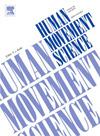通过观察学习前爬:自我模型和他人模型的比较
IF 1.9
3区 心理学
Q4 NEUROSCIENCES
引用次数: 0
摘要
观察学习在技能学习中被广泛应用,自我建模(即观察自己在比目前拥有的更高水平上的表现)是一种很有前途的方法,它通过注意/信息过程产生潜在的直接影响,以及间接的激励效益。然而,先前的研究得出了不同的结果,关于它对儿童学习运动技能的有效性,以及它的影响是直接的,间接的,还是两者兼而有之。目的比较5 ~ 9岁儿童前爬学习动机的影响:自我模仿、自我观察(观察自己在当前水平上的表现)、同伴模仿(观察同伴在比自己高水平上的表现)和对照组。本比较的目的是将自我建模和观察学习对学习结果的直接注意/信息效应与间接动机效应分开。方法67名儿童参加为期8周的干预,随机分为四组。在练习爬泳之前,参与者观看了指导视频,其中包括自己处于相同技能水平(即自我观察)、自己处于较高技能水平(即自我建模)、同伴(即同伴建模)或史莱克的对照视频(对照)。结果三种观察性学习干预对游泳时间的改善均显著大于对照组,观察性学习干预之间无显著差异。四组之间的动机信念没有显著差异。中介分析显示,所有三种观察性干预措施对游泳时间的改善都有显著的直接影响,没有证据表明动机信念会产生间接影响。结论无论采用何种学习模式,观察学习都能提高儿童的前爬学习能力,但对其动机信念没有作用。观察学习的效果似乎主要是直接的,增强了注意力和信息处理。本文章由计算机程序翻译,如有差异,请以英文原文为准。
Learning the front crawl by observation: Comparing self- and other-models
Background
Observational learning is widely used in skill learning, with self-modeling (i.e., viewing oneself perform at a higher level than currently possessed) emerging as a promising method with potential direct effects through attention/information processes, as well as indirect motivational benefits. However, prior research has yielded mixed results regarding its effectiveness in children learning motor skills and whether its effects are direct, indirect, or both.
Objective
This study compared the effects of self-modeling, self-observation (i.e., viewing oneself perform at the current level), peer-modeling (i.e., viewing a peer perform at a higher level than the learner), and a control group on front crawl learning and motivation in children aged 5–9 years. The aim of this comparison was to disentangle the direct attentional/informational effects from the indirect motivational effects of self-modeling and observational learning on learning outcomes.
Methods
Sixty-seven children participated in an eight-week intervention, randomly assigned to one of the four groups. Before practicing the front crawl, participants watched instruction videos featuring either themselves at the same skill level (i.e., self-observation), themselves at a higher skill level (i.e., self-modeling), a peer (i.e., peer-modeling), or a control video of Shrek (control).
Results
All three observational learning interventions led to significantly greater improvements in swimming time than the control group, in the absence of significant differences between the observational interventions. No significant differences were found in motivational beliefs between the four groups. Mediation analyses revealed significant direct effects of all three observational interventions on improvements in swimming time, with no evidence of indirect effects through motivational beliefs.
Conclusion
It appears that, regardless of the model used, observational learning improves children's front crawl learning, but not their motivational beliefs. The effects of observational learning seem to be predominantly direct, enhancing attention and information processing.
求助全文
通过发布文献求助,成功后即可免费获取论文全文。
去求助
来源期刊

Human Movement Science
医学-神经科学
CiteScore
3.80
自引率
4.80%
发文量
89
审稿时长
42 days
期刊介绍:
Human Movement Science provides a medium for publishing disciplinary and multidisciplinary studies on human movement. It brings together psychological, biomechanical and neurophysiological research on the control, organization and learning of human movement, including the perceptual support of movement. The overarching goal of the journal is to publish articles that help advance theoretical understanding of the control and organization of human movement, as well as changes therein as a function of development, learning and rehabilitation. The nature of the research reported may vary from fundamental theoretical or empirical studies to more applied studies in the fields of, for example, sport, dance and rehabilitation with the proviso that all studies have a distinct theoretical bearing. Also, reviews and meta-studies advancing the understanding of human movement are welcome.
These aims and scope imply that purely descriptive studies are not acceptable, while methodological articles are only acceptable if the methodology in question opens up new vistas in understanding the control and organization of human movement. The same holds for articles on exercise physiology, which in general are not supported, unless they speak to the control and organization of human movement. In general, it is required that the theoretical message of articles published in Human Movement Science is, to a certain extent, innovative and not dismissible as just "more of the same."
 求助内容:
求助内容: 应助结果提醒方式:
应助结果提醒方式:


